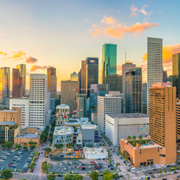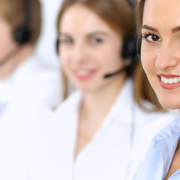Why Secure Application Development Is a Necessity
With news of devastating cyberattacks constantly in the headlines, secure software development is more important than ever. Yet, far too many applications remain vulnerable to exploits by malicious actors.
According to a 2016 survey, for example, 97% of Java applications use code with at least one security hole. Another study found that security vulnerabilities were present in at least 90% of web and mobile apps.
For the good of both you and your customers, security must be a priority at all stages of the software development lifecycle. Below, we’ll discuss how and why to incorporate security into your application development processes.
How to Bake Security Into the SDLC
The software development lifecycle (SDLC) traditionally consists of a series of key phases. They span from requirements gathering and design to testing and maintenance. Whether you use the waterfall (sequential) development model, or you prioritize speed and flexibility with the agile methodology, security can and should be a preeminent concern during this process.
Some helpful guidelines for making security a priority are:
- Developers should be trained on the principles of secure programming. One good place to start is to check your applications for common vulnerabilities, such as the OWASP Top 10 security risks for web applications. OWASP also provides a reference guide for secure coding practices that developers should consult at regular intervals.
- Keep the development tools and technologies that you use as up-to-date as possible. The massive 2017 Equifax data breach, for example, was caused by a vulnerability in the Apache Struts web application development framework that the company should have already patched.
- Include automated application security testing as part of your testing processes.
Related: How to Prepare Your Business for Unexpected Disasters
Regulatory Considerations for Application Development
Beyond the standard best practices for secure development, companies in certain industries must take special care to protect their applications and data from unauthorized breaches.
For example, the Health Insurance Portability and Accountability Act (HIPAA) requires health care organizations to secure patients’ protected health information (PHI). Companies that suffer a data breach must report the attack soon after its discovery. They may face financial penalties if the information was not adequately protected.
Another security standard, PCI-DSS (Payment Card Industry Data Security Standard), regulates how organizations may handle and store customers’ payment card information.
Related: Why You Must Never Neglect Software Testing
The 12 PCI-DSS requirements include the installation of a firewall and the encrypted transmission of cardholder data across open networks. Failure to meet these guidelines may result in harsh fines and even the revocation of your company’s ability to process credit cards.
The Role of MSPs During Software Testing
You may feel overwhelmed by the potential vulnerabilities and security flaws that you need to account for. But rest assured that you don’t have to go it alone. A growing number of companies are relying on managed security providers (MSPs) to assist them with application security testing during the development process.
By working with an MSP, you can focus on your core business functions while leaving the security tests to the experts. MSPs will subject your application to a variety of both automated and manual tests. Automated vulnerability scanners can immediately identify a number of weaknesses and flaws, while manual “penetration tests” evaluate the software’s resiliency to attack.
Partnering with an MSP can give you high-quality, efficient and timely security tests so that you can keep pace with your development schedule without sacrificing software quality.























